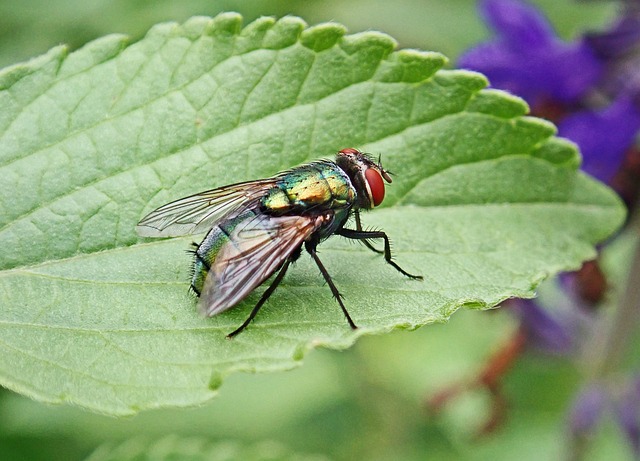Large-scale facilities face unique pest control challenges requiring advanced, strategic solutions from professional commercial pest management (PCPM) services. Experts integrate modern technologies like smart sensors, targeted treatments, and eco-friendly products to mitigate damage, disruptions, and health risks from rodents, insects, and birds. The PCPM industry has transformed with cutting-edge tech such as surveillance systems, IoT devices, motion sensors, AI, and smart chemicals, prioritizing both effectiveness and safety while minimizing environmental impact. These innovations meet the demand for sustainable practices in large facilities, enhancing environments, operational efficiency, and cost savings compared to traditional methods. Future PCPM will further incorporate smart sensors, IoT, predictive analytics, and machine learning for early infestation detection and targeted treatments based on data analysis.
In today’s era of advanced technology, maintaining pest-free environments in large-scale facilities presents unique challenges. From manufacturing plants to agricultural warehouses, these spaces require efficient and innovative professional commercial pest management strategies. This article explores the evolving landscape of modern pest control, highlighting critical issues, cutting-edge technologies, and future trends shaping the industry. Discover how smart, targeted solutions are revolutionizing protection in large-scale facilities.
Understanding Modern Pest Control Challenges in Large-Scale Facilities
In today’s world, large-scale facilities face unique challenges when it comes to pest control. These structures, whether they are manufacturing plants, agricultural warehouses, or healthcare centers, often harbor complex ecosystems that can foster a diverse range of pests. Traditional methods may not be as effective or efficient in these environments, leading to increased reliance on professional commercial pest management services.
Modern pest control challenges include the need for comprehensive solutions that consider the intricate layout and operational requirements of large facilities. Pests like rodents, insects, and birds can cause significant damage, disrupt operations, and pose health risks. Effective professional commercial pest management demands a strategic approach that integrates advanced technologies, such as smart sensors, targeted treatments, and eco-friendly products, to ensure a safe, hygienic, and productive environment for all.
Innovations in Commercial Pest Management Technology
The world of professional commercial pest management has seen a significant evolution, embracing cutting-edge technologies to deliver more efficient and environmentally conscious solutions. Traditional methods are being revolutionized by innovations such as advanced surveillance systems, which employ motion sensors, cameras, and AI to identify pest activity, allowing for precise treatment areas. Moreover, the integration of IoT (Internet of Things) devices enables real-time monitoring of environmental conditions like temperature and humidity, providing data-driven insights to optimize pest control strategies.
Another notable trend is the rise of smart, eco-friendly chemicals. Modern pesticides are designed with enhanced specificity, targeting specific pests while minimizing impact on non-target organisms and the environment. Additionally, the use of biological control agents, such as beneficial insects and microbes, offers a natural approach to pest management, promoting sustainable practices in large-scale facilities. These innovations not only ensure effective protection against pests but also align with the growing demand for professional commercial pest management services that prioritize safety and environmental stewardship.
Implementing Smart and Targeted Pest Control Solutions
In today’s digital era, advanced technologies have revolutionized professional commercial pest management. Smart and targeted pest control solutions offer precise, data-driven approaches that go beyond traditional methods. By integrating IoT sensors, AI algorithms, and real-time monitoring, these systems detect pest activity early, identify specific areas of concern, and deploy targeted treatments only where needed. This not only minimizes the use of pesticides but also enhances environmental sustainability.
Implementing these innovative solutions requires collaboration between facility managers, pest control experts, and technology providers. Regular inspections, data analysis, and adaptive strategies are key to optimizing the effectiveness of smart pest control systems. As a result, large-scale facilities can achieve superior pest management, ensuring a safer, healthier, and more productive environment for occupants while maintaining operational efficiency and reducing costs associated with traditional pest control methods.
Future Trends Shaping Professional Commercial Pest Management
The future of professional commercial pest management is brimming with innovative technologies and sustainable practices, driven by advancements in automation, data analytics, and environmentally-conscious solutions. One prominent trend is the integration of smart sensors and IoT devices that can detect even the slightest signs of infestation, enabling early intervention and reducing the need for extensive treatments. These technologies not only enhance efficiency but also minimise the environmental impact commonly associated with traditional pest control methods.
Additionally, predictive analytics and machine learning algorithms are transforming how professionals approach pest management. By analysing historical data and identifying patterns, these tools enable targeted and precise applications of treatments, minimising waste and potential health risks. This shift towards more tailored and sustainable practices ensures that the industry continues to evolve, meeting the demands of large-scale facilities while upholding rigorous standards of safety and effectiveness in professional commercial pest management.
Advanced pest control technologies are transforming the way we approach professional commercial pest management, addressing complex challenges in large-scale facilities. By embracing innovations like smart sensors, data-driven solutions, and targeted treatments, we can achieve more effective and environmentally friendly results. As these technologies continue to evolve, professionals in the field must stay informed to leverage emerging trends, ensuring optimal protection for their clients’ properties and contributing to a sustainable future.
